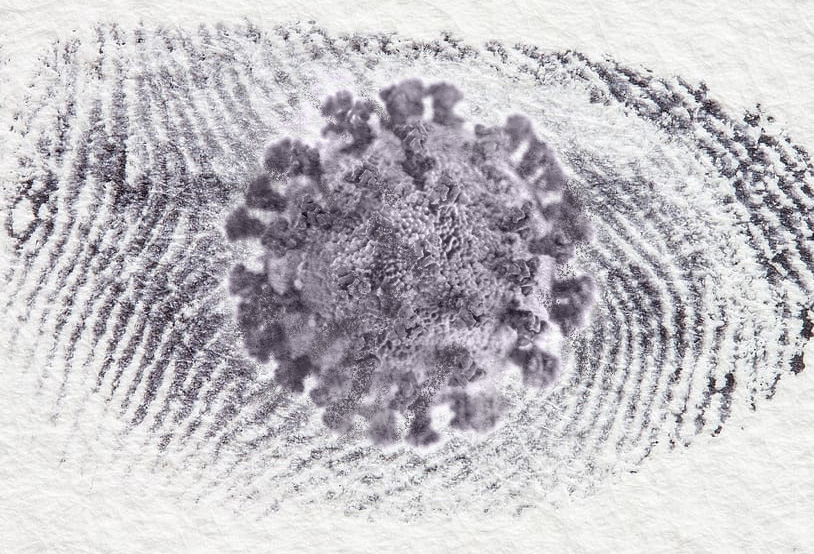Fingerprint time clocks: A transmission-vector for essential services workers of COVID-19 lockdown.
Authored by - Apr 10, 2020
As worries about security have grown, so has the market for biometric scanners that use person-specific qualities, such as fingerprints, to keep access restricted to specific personnel.

The chance that someone has the same fingerprint as you has been estimated at about 1 in 64 billion which makes the use of fingerprints for identification pretty alluring. If you’ve travelled internationally, there is a good chance that you have had to place your thumb and fingers onto a pane of glass to be logged against your passport data.
When it comes to keeping track of your employees time, fingerprint scanners almost seem ideal. No worries about remembering passwords or filling out timesheets – just press your thumb against the panel and you’re off.
Except for one teeny, tiny, microscopic issue… Germs.
COVID-19 (the novel coronavirus) has suddenly awoken the world to the fact that when you touch something, any disease-causing bacteria and viruses that live there will attach to your skin and could be passed into your bloodstream via cuts or your eyes, nose or mouth.
Another thing we’ve learned is that pathogens can survive on surfaces for longer than you would expect – COVID-19, for example, can live on glass for up to five days.
Surface transmission rates are complicated, to say the least. But as one study states, current scientific evidence suggests that fomites (disease-carrying surfaces) are an important vehicle in the spread of respiratory viruses.
In South Korea, one organisation that had significantly high cases of novel coronavirus transmission had the fact that it used fingerprint scanners highlighted as a major issue in viral transmission of COVID-19.
In the USA, the entire New York Police Department and Metropolitan Transit Authority have suspended the use of fingerprint scanners across their premises.
Of course, this all makes total sense at this difficult time of the pandemic, but ask yourself why it makes any less sense during our usual day-to-day? Rhinovirus, norovirus, seasonal flu, and all of those other nasties that keep employees from work at their mildest, and cause serious illness or death at their worst, are always going to be a threat.
So what is the solution? Keep disinfectant wipes nearby to be used after each person scans in? Spend thousands of dollars a year on hand sanitiser? Or just let your organisation’s employees and outcomes be at risk and keep your fingers crossed?
Of course not.
There are many other solutions out there that can provide the same level of convenience as fingerprint scanners, without the risk of transmitting pathogens that can cause potentially fatal diseases.
TimeDock’s solution allows any and every member of your team to be able to clock in and out for payroll without any contact with the device through a simple swipe of a card.
As well as keeping your organisation safe and healthy, TimeDock automatically pushes all clock in/out information to an intuitive cloud platform that you or your accounting staff can access anywhere and any time.
Contact us today to see how TimeDock can save you time and money, and help prevent disease outbreaks among your valuable staff.